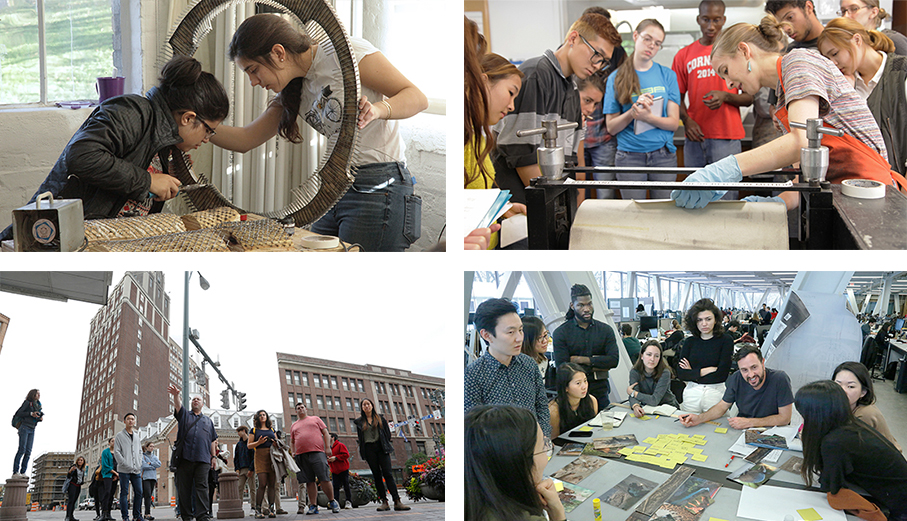Photo Tips
Thank you for your interest in providing AAP with quality program-oriented images for use in college publications, social media, and on the website. This guide includes instructions on how to capture great images that feature AAP people (and their creations) along with some tips to avoid common problems that can render even the best photo unusable.
Image Subject
The subject of the photo should include AAP people involved in activities relevant to the degree programs. For instance:
- Students working on projects
- Faculty instructing students
- Environmental shots of faculty with students at AAP or on field trips
- Students and/or faculty engaging with lecturers or other notable guests
Composition Tips
While composing an image, the priority is to decide what the main subject is and control how it is affected by the lighting, surrounding elements, and background.
Background Treatments
- Include the background when the environment tells a story about the subject
- Simplify the background when it distracts from the subject
- Move in close to eliminate background, emphasize the subject, and capture more details

Rule of Thirds
A great composing method where the focal points of the image are placed off-center, along vertical or horizontal one-third lines.

Lead-in Lines
The intentional placement of implied or actual lines meant to direct the viewers' eyes. Examples include:
- The direction a subject is looking
- The direction a hand is pointing

Common Problems and Solutions
Common technical errors and how to avoid them:
Problem: Not in focus. What appears to be in focus to an amateur/beginning photographer often falls short of the crisp perfection of a professional photograph
Solution: Use autofocus and take several shots. Hold the camera still (use a tripod, table, wall, or other non-moving structure to support the camera)
Problem: Bad exposure. Over or underexposed images may cause distracting light source effects such as glaring reflections or hot spots
Solution: Set camera to program or bracket manual settings, take several shots
Problem: Hard lighting, distracting shadows from camera flash
Solution: Turn off camera flash and use available lighting whenever possible
Problem: File size too small for print media or large crops
Solution: Adjust camera settings to largest file sizeCommon compositional errors and how to avoid them:
Problems:
- Odd expressions, blinking eyes, looking at cell-phones
- Too much of the image blocked by the backs of people's heads
- An object (like a plant) growing out of someone's head or other awkward placements
- No obvious subject
Solutions:
- Decide on a subject and be aware of the background and surrounding elements
- Take several shots from the best vantage point
- Move around and take additional shots from different vantage points




